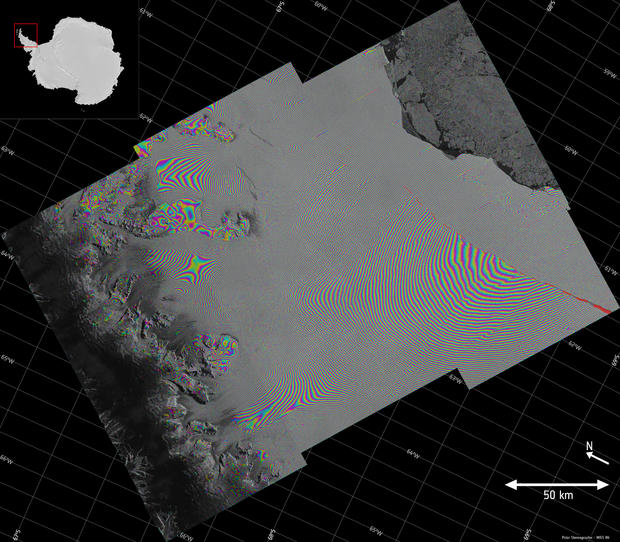Check out Antarctica's growing ice shelf crack from space
Satellites are bearing witnesses to a massive, steadily growing crack in Antarctica’s Larsen-C ice shelf.
Ice shelves are extremely vulnerable to climate change. Two other portions — known as the Larsen-A and Larsen-B ice shelves — already collapsed in 1995 and 2002, respectively.
Using images captured by their satellites, European Space Agency (ESA) scientists are watching the Larsen-C crack worsen in slow motion. They combined several radar images to create the following interferogram image of the ice shelf, with its growing crack visible on the right-hand side. ESA says the interferogram measures surface deformation of the ice along the line where it’s splitting apart, which may not be visible on the surface.
When the ice shelf ultimately breaks, it will create one of the largest icebergs ever recorded, according to the ESA.
Antarctica’s ice shelves are crucial to global environmental stability because they act as buffers, holding back Antarctic glaciers and ice streams from spilling out into the sea.
Rising temperatures and increased water flow could eventually cause Antarctica’s ice shelves to collapse entirely, triggering dangerous sea level rise across the world. Sea level rise is a major risk factor this century: according to projections from NOAA, global sea levels are expected to rise between one foot and 8.2 feet by the year 2100.
In a study published last week, scientists explained that Antarctica’s ice shelves are even more vulnerable to melting and collapse than previously thought due to the unexpectedly widespread free-flowing water recently seen across the continent.
Global warming is transforming the Arctic, with effects that include significantly warmer temperatures, declining amounts of sea ice, and more open water in previously frozen areas with each passing year.
The ice shelves “act as a safety band,” the ESA explained. “If lost, it could be the point of no return.”




